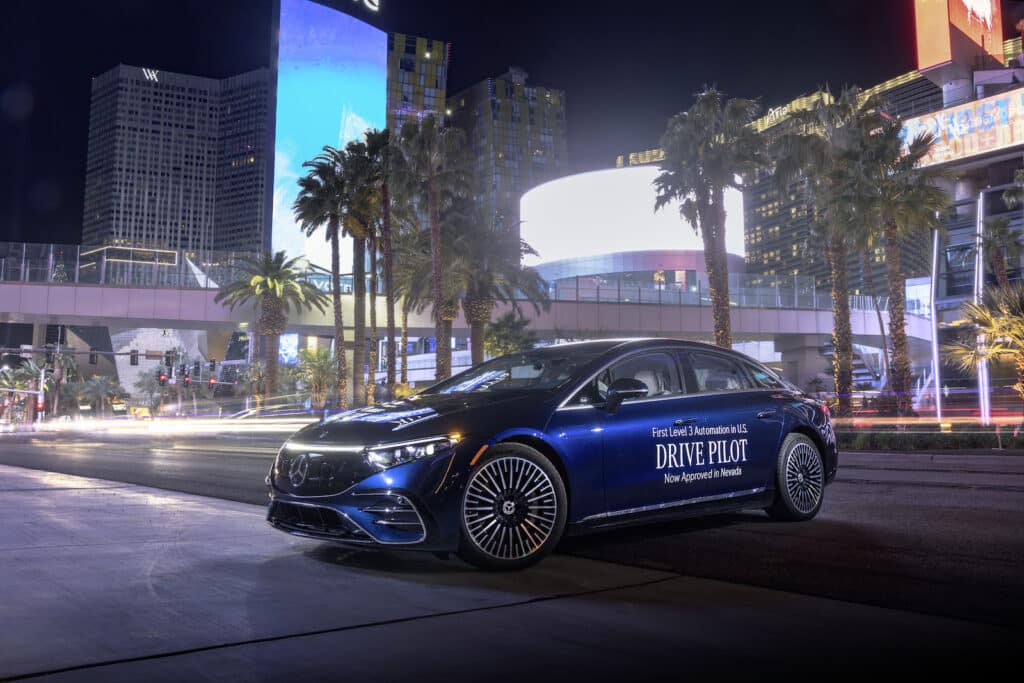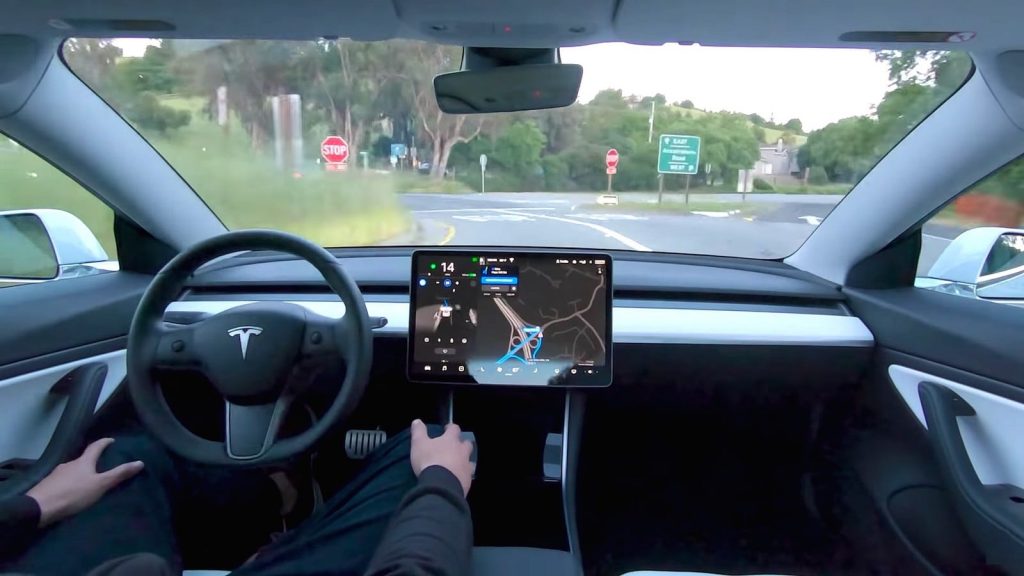Already authorized in both Germany and the State of Nevada, Mercedes’ new Drive Pilot system just got the green light to go on sale from California’s Department of Motor Vehicles.
Drive Pilot is the first “Level 3” autonomous driving system approved for sale to retail motorists in the U.S. — though several even more advanced systems have been authorized for use by ride-sharing services such as Waymo and Cruise. And it gives Mercedes-Benz a leg up on rival Tesla.
Drive Pilot allows a motorist to not only take their hands off the steering wheel but shift focus away from the road. That would include texting, making hands-on cellphone calls and even watching videos on the vehicle’s infotainment screen. But the system has numerous limitations — among other things, restricting its use to speeds under 40 mph.
Setbacks
The race to bring autonomous driving to the real world has taken significantly longer than expected. A decade ago, Nissan promised to have a fully autonomous vehicle in production by 2020. Three years later, its ProPilot Assist system allows a motorist to take their hands off the wheel only under very limited circumstances — and the driver must keep eyes on the road and be ready to retake control in an instant.

General Motors has won kudos for its Super Cruise system which can automatically change lanes to pass a slower vehicle under certain conditions. But it also requires a driver to stay alert and ready to grab the wheel. Tesla’s AutoPilot and Full Self-Driving systems also have received praise. But despite widespread assumptions — reflected in numerous YouTube and TikTok videos — they both still require motorists to maintain hands on the wheel at all times.
Drive Pilot “enables a whole new experience in your car,” Markus Schäfer, the Mercedes board member in charge of technology, said during a media roundtable at the Consumer Electronics Show last January. “You will have time to do something else.”
Strictures and limitations
Nevada set relatively few strictures on the use of the new system when it authorized sales last January. California’s DMV is being a bit stricter. It requires motorists to watch an instructional video before Mercedes activates the technology.

For its part, Drive Pilot will only be operable at relatively low speeds — up to 40 mph — meaning it will primarily assist drivers facing heavy traffic on interstates and some other divided highways. But that could prove quite popular with motorists in many parts of California where average speeds can dip into the single digits during rush hour.
The system is designed to recognize and respond to traffic signals and signs. It also keeps a digital ear out for emergency vehicles and can maneuver out of the way to let them pass. Additional sensors will disable the system in bad weather.
Watch a video — but don’t take a nap
While operating, Drive Pilot will permit a motorist to shift their attention elsewhere, as long as they remain awake and alert. They will be able to find other ways to occupy the passing time, including watching videos or texting. They won’t be able to take a nap, however, nor jump into the back seat – as videos have shown Tesla owners doing while operating on Autopilot and FSD.
Mercedes has taken a number of steps to ensure Drive Pilot doesn’t malfunction, among other things installing backup sensors and dual computer processors, one reserved as a fallback if the primary system fails.

The automaker is hoping to avoid the embarrassing failures linked to Tesla’s semi-autonomous technologies which have come under repeated investigation by the National Highway Traffic Safety Administration and the National Transportation Safety Board.
Timing
“The certification by the authorities in California and in Nevada once again confirms that redundancy is the safe and thus the right approach,” said Schäfer.
Drive Pilot will be introduced into the U.S. on the 2024 Mercedes-Benz EQS, the automaker’s flagship battery-electric vehicle. Pricing has not yet been announced.
It may soon face competition. Tesla CEO Elon Musk has repeatedly promised a full hands-free version of the FSD system – though that launch has repeatedly been delayed.
Volvo has promised to come up with similar capabilities on some of its future EVs. As with the Mercedes EQS, its new EX90 will feature Lidar, a 3D laser sensing technology that many experts believe will be essential to fully autonomous driving.

